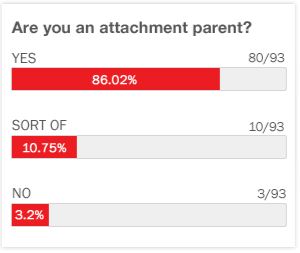Facts about delivering your placenta
Comment
OBGYN Lauren Hyman, MD, explains the third stage of labor, the delivery of the placenta, and how the process is carried out
222
Transcription:
Delivery of the placenta is the third stage of labor after dilating and then pushing. After the baby is born, the cord is clamped and cut. The baby is handed to the mother or the nurse that's there to help. And, blood is obtained from the cord which is still attached to the placenta which is still attached to the uterus, and this blood goes to the hospital lab to check the baby's blood type. In addition, if parents choose, blood from the cord and placenta can also be saved for stem cell collection and storage. You can tell that the placenta is ready to separate from the uterus and come out which generally happens about 1 to 5 minutes after the baby is born because the uterus becomes more globular, suddenly the amount of cord that's coming out of the vagina lengthens and there's a sudden gush of blood. Generally, the doctor or the midwife will ask the patient to bear down gently and the placenta will come out in to the waiting basin. The doctor has to make sure that the placenta is delivered in its entirety, that it's complete with all its membrane intact because we wouldn't want to leave any bits of membrane or placenta in the uterus that can lead to problems with bleeding or infection later on. So, the doctor or the midwife looks at the placenta, makes sure it's all complete and then can work on making sure that the mother isn't bleeding in an excessive fashion. The mother at this point is receiving Pitocin through an IV or if there hasn't been an IV through an injection in the thigh. And, when the doctor is comfortable that the uterus is firming up, that the bleeding is under control, the doctor, the midwife can then repair the episiotomy or the laceration. It's very, very interesting for mothers and fathers to look at the placenta if they so desire after the birth. The placenta and the sack that's part of the placenta that has carried that baby and kept it healthy for 9 months and it's often very interesting to look at it and really see what has held your baby during this whole pregnancy.
OBGYN Lauren Hyman, MD, explains the third stage of labor, the delivery of the placenta, and how the process is carried out
Related Videos
Transcript
Expert Bio
More from Expert
Lauren D. Hyman, MDObstetrician Gynecologist
Dr. Lauren Hyman is a board-certified obstetrician gynecologist. After receiving her ScB from Brown University and her medical degree from Yale University, Dr. Hyman returned to Southern California where she has been in private practice in the West Hills area for fifteen years. She can be seen weekly on Hallmark Channelʼs Home and Family Pregnancy Series and is a contributing writer on mom.me. She lives with her husband and two children in Los Angeles.




 GET ACCESS TO ALL PREMIUM CONTENT WITH NO ADS FOR $4.99/MONTH
GET ACCESS TO ALL PREMIUM CONTENT WITH NO ADS FOR $4.99/MONTH




Login or Register to view and post comments